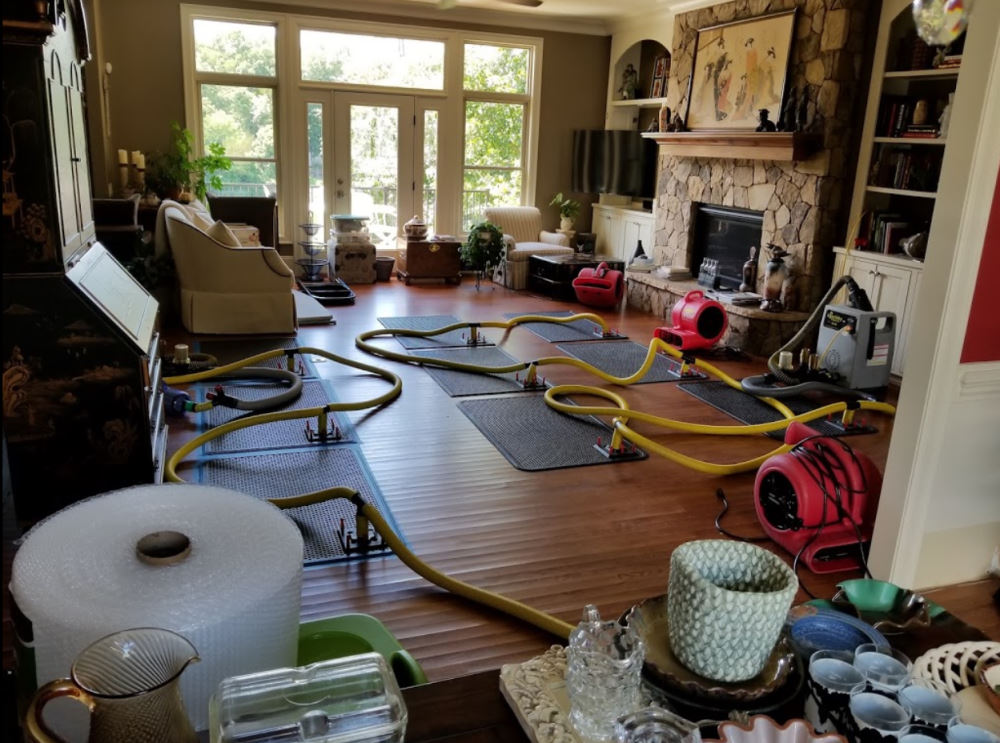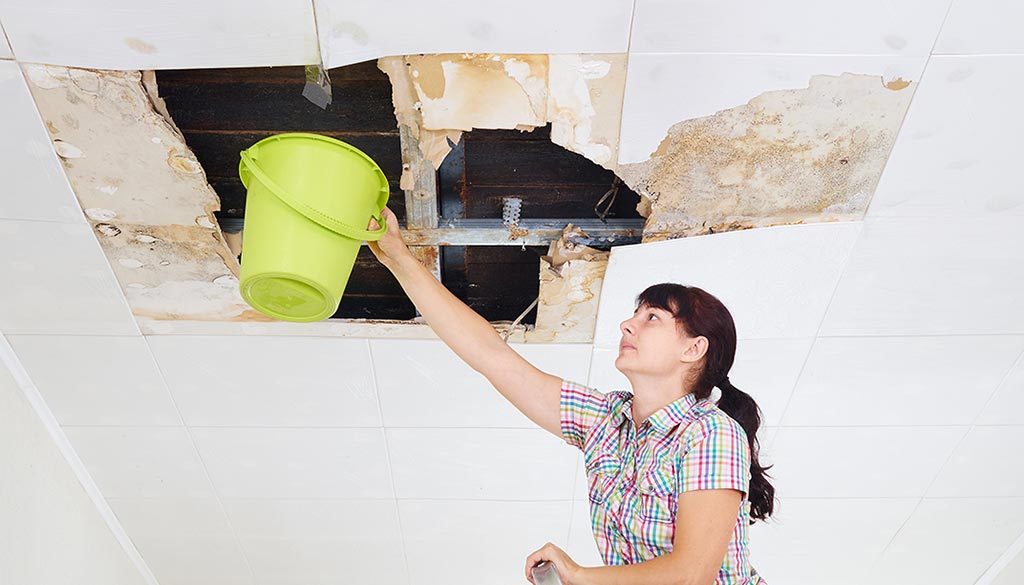What Happens If You Postpone Flood Damage Restoration? The Hidden Costs Explained
What Happens If You Postpone Flood Damage Restoration? The Hidden Costs Explained
Blog Article
Necessary Steps to Adhere To for Efficient Water Damage Repair in Your Home
When encountered with water damage in your home, knowing the crucial actions for reliable repair can make all the difference. You need to evaluate the damage and assurance safety before tackling the issue. Stopping the resource of water is vital, however it's simply the start. There's a series of activities you should take to protect your building from additional concerns as soon as you've managed that. Allow's discover what you need to do following.
Analyze the Damage
The first step is to analyze the damages completely when you discover water damages in your home. Begin by determining the source of the water breach. Check for leakages, burst pipes, or various other issues creating the issue. Next off, examine the impacted areas for visible indicators of damages, including discoloration, mold and mildew, or warping growth. Don't neglect to search in surprise places like behind walls or under flooring, as water can permeate into these areas unnoticed.Document the damages by taking clear photos and notes. This will certainly assist you when talking about the scenario with your insurance coverage service provider or repair professionals. Focus on the sort of products influenced, as different materials require different restoration methods. Review the extent of the damages. Is it comprehensive or minor? Comprehending the range will lead you in making a decision whether to manage it on your own or call the specialists for an extra extensive repair process.

Make sure Safety
Prior to you start any type of repair job, assuring your safety and security is essential. First, analyze the problem of your home. If the water's deep or if you discover electric risks, don't go into the location. Switch off the electrical energy and gas supply to stop accidents. Put on protective gear like masks, gloves, and boots to protect yourself from pollutants or mold.It's vital to stay knowledgeable about your surroundings; look for sharp items and slippery surface areas. Treat it as unsafe waste if the water is from a sewer back-up. Maintain pet dogs and children away from affected areas to prevent exposure.Once you've taken these precautions, you can wage the reconstruction process. Keep in mind, your safety and security comes first, and if you're ever unsure, it's best to speak with an expert. Taking these actions will assist assure you're all set to tackle the repair securely and effectively.
Quit the Resource of Water
After guaranteeing your safety and security, the next step is to stop the source of water. Recognize where the leakage is originating from. Maybe a ruptured pipeline, a defective device, and even heavy rainwater entering through a harmed roof. Transform off the main water supply to your home to stop more flooding if it's a pipes issue. For appliances, unplug them and close off their water supply valves.If the source is outdoors, like rainwater, attempt to divert it far from your home making use of sandbags or various other obstacles. For minor leaks, you could be able to utilize tape or a sealant momentarily till a specialist can fix it. Keep in mind, dealing with the resource promptly is necessary to decreasing damage and avoiding mold development. When you've stopped the water, you'll remain in a far better setting to move on to the following action in the reconstruction procedure.

Get Rid Of Excess Water
Act promptly to eliminate excess water, as standing water can result in much more extensive damage and mold development. Initially, collect your devices: a wet/dry vacuum cleaner, buckets, and towels. If the water is superficial, you can make use of towels to take in the dampness. For much deeper water, a wet/dry vacuum cleaner is your best option. See to it to clear the vacuum regularly to stay clear of overflow.If the water is infected, like from a sewage backup, put on protective equipment, including gloves and masks, to keep on your own safe. Once you have actually gotten rid of as much water as possible, check for covert pockets of wetness in edges and under furnishings, as these can harbor mold.Don' t neglect to switch off electric appliances and power outlets in wet locations to prevent dangers. This initial action is vital in lessening damages and setting the phase for an effective restoration process.
Dry and Dehumidify the Area
Once you've removed the excess water, it's crucial to dry and evaporate the location extensively. Beginning by using dehumidifiers efficiently to pull dampness out of the air and protect against mold and mildew development. Keep an eye on humidity levels to ensure the room dries completely.
Get Rid Of Standing Water
To successfully tackle water damages, you need to concentrate on removing standing water as swiftly as possible. Start by gathering essential devices, like a wet/dry vacuum cleaner or a pump, depending on the quantity of water. If the water is shallow, a vacuum should do the trick. For bigger amounts, a pump is much more effective. While working, make certain to wear safety equipment to keep on your own risk-free from contaminants. As you remove the water, pay attention to concealed locations like under furnishings or in corners where water could accumulate. Your space will begin to dry out once you have actually gotten rid of the bulk. This step is essential, as sticking around water can result in mold and mildew growth and much more considerable damage.
Usage Dehumidifiers Efficiently
How can you efficiently Look At This use dehumidifiers to dry and evaporate your area? Beginning by placing your dehumidifier in one of the most damaged location, ideally where water damage is most serious. See to it to close all doors and windows to create a covered atmosphere. Transform on the dehumidifier and established it to the ideal humidity degree, typically around 30-50%. Empty the water collection tank often, or think about making use of a model with a constant drainage alternative for benefit. Preferably, use fans to boost air movement, assisting the dehumidifier work more effectively. Maintain the dehumidifier running till you're positive that the location is extensively dried, preventing mold growth and added damages (Water Damage Restoration St George UT). This action is vital for reliable water damages remediation
Display Moisture Degrees
Surveillance moisture degrees is vital throughout the drying process, as it aids ensure your area stays devoid of excess wetness. Purchase a trustworthy hygrometer to track humidity precisely. Ideally, you want to keep levels in between 30% and 50%. image source You might need to readjust your fans or dehumidifiers to improve air flow if humidity analyses climb above this variety. Inspect the readings routinely, particularly in areas prone to moisture, like basements or restrooms. If you discover persistent high humidity, think about enhancing ventilation or making use of added dehumidifiers. Staying on top of these degrees not just accelerates the drying out procedure however additionally stops mold development, ensuring your home keeps comfortable and safe.
Clean and Disinfect Affected Surfaces

Bring back and Repair Your Home
After cleansing and decontaminating the influenced locations, it's time to bring back and fix your home. Begin by assessing the damage. Inspect for structural issues, like compromised floorings or walls, and address any essential repairs. Changing damaged drywall or floor covering is necessary for both visual appeals and safety.If your furnishings or personal belongings were affected, think about whether they can be salvaged or require replacement. Tidy or professionally recover products where possible.Next, paint walls and touch up any locations that require interest. This not only improves look however also secures surfaces from future water damage.Don' t forget to inspect your plumbing and devices for leakages, making certain everything's working properly. Consider mounting a dehumidifier to avoid future moisture issues. By taking these actions, you'll restore your home to its former glory and produce a more secure living setting.
Frequently Asked Inquiries
How Much Time Does Water Damage Repair Generally Take?
Water damage restoration usually takes anywhere from a couple of days to numerous weeks, relying on the level of the damage (Smoke Damage Restoration). You'll wish to analyze the circumstance swiftly to reduce further complications and guarantee proper restoration
Will My Insurance Coverage Cover Water Damage Restoration Prices?
Your insurance policy may cover water damages reconstruction expenses, however it depends on your plan. Examine your protection information and contact your insurance coverage agent to clarify what's consisted of helpful hints and what you need to sue.
Can I Take Care Of Water Damages Repair Myself?
You can manage water damage remediation yourself, however it's essential to assess the circumstance. If it's comprehensive, you may wish to call experts. Always prioritize security and guarantee you have actually obtained the right devices.
What Are the Signs of Hidden Water Damages?
You could notice signs of covert water damage like distorted walls, musty smells, or discoloration. If your floorings really feel squishy or you area mold and mildew, it's time to explore further prior to the circumstance gets worse.
How Can I Protect Against Future Water Damages in My Home?
To avoid future water damage in your home, you must routinely check pipes, seal fractures, preserve rain gutters, and warranty correct drainage. Installing a sump pump and moisture barriers can additionally help keep your space completely dry. When you discover water damage in your home, the first step is to evaluate the damage completely. Act swiftly to remove excess water, as standing water can lead to much more extensive damage and mold development. To efficiently take on water damage, you require to focus on getting rid of standing water as quickly as feasible. As you get rid of the water, pay focus to concealed areas like under furnishings or in edges where water may gather. Water damage repair typically takes anywhere from a few days to a number of weeks, depending on the degree of the damage.
Report this page